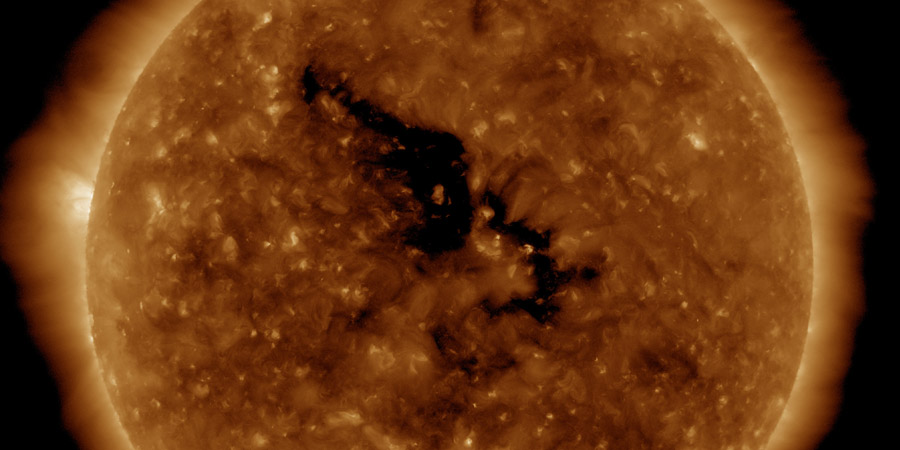Coronal hole faces Earth
Sunday, 20 January 2019 19:08 UTC

A coronal hole is facing our planet today and sending a high speed solar wind stream towards our planet.
Our automated coronal hole detection system did its job and detected the coronal hole. An alert was send to the mobile app and our Twitter account:
A transequatorial coronal hole is facing Earth. Enhanced solar wind could arrive in ~3 days. Follow live on https://t.co/bsXLidnzGh pic.twitter.com/JJTeUq1b00
— SpaceWeatherLive (@_SpaceWeather_) January 20, 2019
Compared to the previous rotation we can conclude that this coronal hole has ever so slightly increased in size. When the coronal hole solar wind stream passed STEREO Ahead a couple of days ago (a satellite in orbit around the Sun now located on the east side of the Sun as seen from Earth) we saw an increase in the solar wind speed to about 600km/s but only a modest increase in the parameters that make up the interplanetary magnetic field. The total strength (Bt) increased to just over 10nT but the north-south direction (Bz) of the magnetic field never had a sustained period with a southward component which we really need for enhanced auroral activity. It is not a guarantee that we will see exactly the same values at Earth of course but looking at the data from STEREO Ahead gives us a good indication of what to expect. With the data in hand we have to conclude that geomagnetic storm conditions are unlikely. We should at most expect a Kp of 3 (unsettled geomagnetic conditions) to Kp4 which stand for active geomagnetic conditions. The solar wind stream is likely to arrive at our planet either late on the 22nd (Tuesday) or early on the 23rd of January which would be Wednesday.
Thank you for reading this article! Did you have any trouble with the technical terms used in this article? Our help section is the place to be where you can find in-depth articles, a FAQ and a list with common abbreviations. Still puzzled? Just post on our forum where we will help you the best we can!
Latest news
Latest forum messages
Support SpaceWeatherLive.com!
A lot of people come to SpaceWeatherLive to follow the Sun's activity or if there is aurora to be seen, but with more traffic comes higher server costs. Consider a donation if you enjoy SpaceWeatherLive so we can keep the website online!

Space weather facts
| Last X-flare | 2024/03/28 | X1.1 |
| Last M-flare | 2024/04/30 | M1.3 |
| Last geomagnetic storm | 2024/04/26 | Kp5+ (G1) |
| Spotless days | |
|---|---|
| Last spotless day | 2022/06/08 |
| Monthly mean Sunspot Number | |
|---|---|
| March 2024 | 104.9 -19.8 |
| Last 30 days | 139.9 +35.1 |


